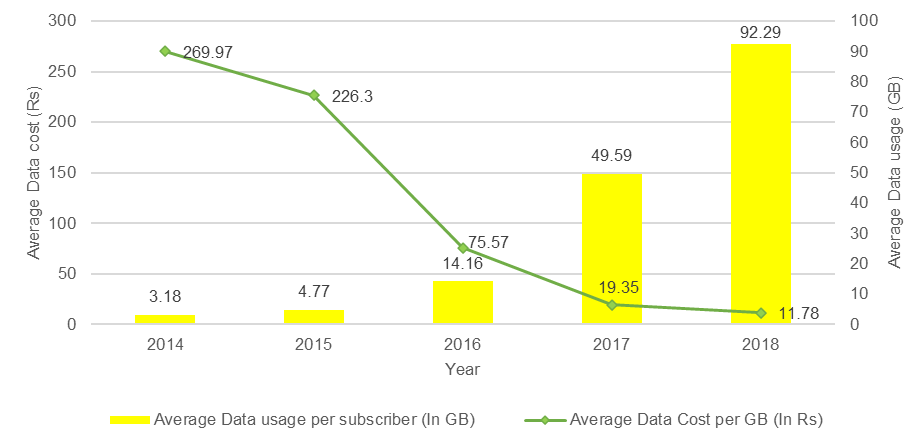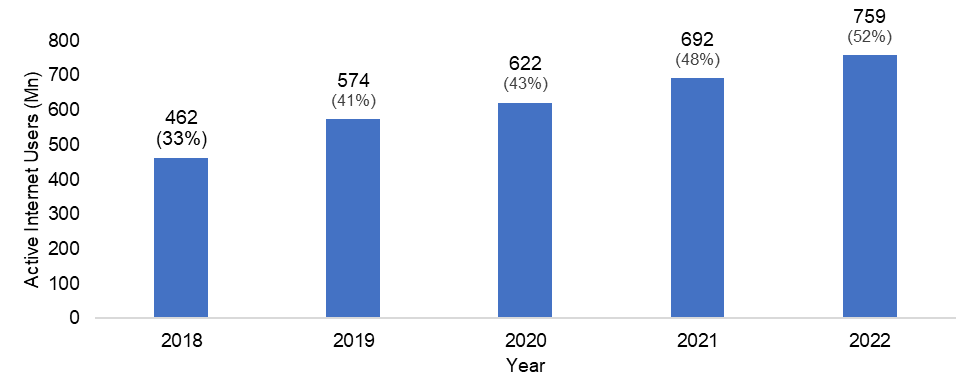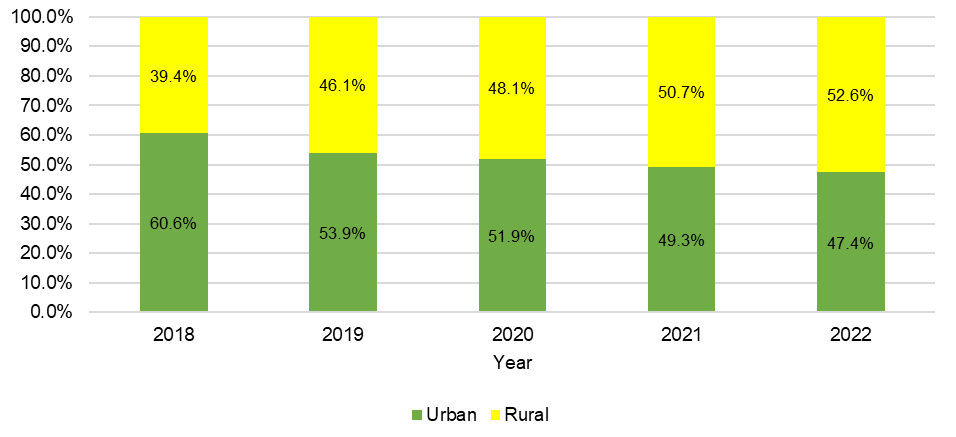Rural India: Power of the Internet and Startups
Rural India is at the cusp of a revolution powered by the internet and startups, I deep dive and explore their journey.
ARTICLES


Photo by Joel Abraham Manoj on Unsplash
Rural Prominence in India
As of Jan 2023, according to the economic survey [1] of the Indian Ministry of Finance, 65% of the population lives in rural areas. The following three criteria define a rural area in India per the census.
A population of less than 5,000
Density of population less than 400 per sq km
Greater than 25% of the male working population is engaged in agricultural pursuits.
As of the last census in 2011-12 (the census due in 2021 has been chronically delayed and has caused a dearth of data for researchers and policymakers), 46.9% of India's net domestic product comes from the rural population. Most importantly, 70.9% of the country’s workforce comes from the rural regions of the country.
It goes without saying that nurturing the rural economy is absolutely critical for the cascading and compounding effects it will have on the entire nation’s economy. In this article, I intend to focus my curiosity and ask the causal questions of how the booming internet penetration has impacted rural India. How has the startup ecosystem responded to it? What are its progress and challenges?
India’s Successful Digital Disruption
India has seen a monumental increase in internet penetration over the last decade. This has been primarily driven by two factors: low-cost Internet plans by Reliance Jio and the introduction of 4G technology in 2016. Together, they have disrupted the telecom industry and supercharged Internet adoption.
This is reflected in the Telecom Regulatory Authority of India (TRAI) wireless data services report 2018. The cost of 1GB of data dropped significantly by 66.6% from Rs. 226 to Rs. 75.57 in 2016, and this further reduced by 94.8% to Rs 11.78 in 2018. The heavily correlated increase in average internet usage is a testament to the adoption of these interventions. (See Figure 1).
Figure 1: Average Data Cost vs Usage
Source: TRAI Wireless Data Services in India 2018 Report.
Rural India - Leading the way.
The 2022 KANTAR report by IAMAI (Internet and Mobile Association of India) further emphasizes the increased internet penetration. India currently boasts a majority of Indians (52%) being active internet users, bringing a vast user base and market size for startups to cater to. (See Figure 2)
Figure 2: Active Internet Users (Mn) - All India
Source: IAMAI KANTAR report 2022. Numbers in brackets indicate internet penetration.
What is encouraging is that rural India has been driving most of the adoption since 2021 (Figure 3). 52.6% of the internet users are from rural India. The report also estimates that the active internet users for the rural population will reach 56% in 2025 and currently account for 41% of the total rural population.
Figure 3: Active Internet Users - Urban vs Rural
Source: Aggregated by Author based on IAMAI KANTAR report 2022
The more exciting fact is the primary activities of active Internet users. Apart from the usual suspects of entertainment, communication, and social media, which more than 70% of the users engage in, a healthy 52% engage in net commerce activities that drive businesses. Critically, 38% of active rural users engage in Net commerce activities vs. 67% of active urban users.
These reports lead me to honestly believe India is on the path of democratizing internet and, most importantly, digital finance. This digital economy ultimately enables startups to advance rural development multifold. 14.96% of India’s rural population is multidimensionally poor, and the Internet could be the gateway to their liberation.
Rural-Focused Indian Startups and Their Outlook
Rural development objectives can be a comprehensive list; however, the critical priority items are listed below.
Agriculture
Infrastructure
Education
Public health
Women empowerment
Micro Finance
Employment
In this article, I primarily focus on 3 of these priority items and review the literature to determine the opportunities, challenges, and progress of Indian Startups. – Agriculture, Micro Finance, and Women Empowerment.
Agriculture:
47% of India's population depends on agriculture for livelihood. Agriculture contributed 15% of last Fiscal year’s GDP, and 92% of agricultural establishments are from rural areas [2]. These numbers illustrate the importance of agriculture to the rural and Indian economy. Agriculture is on the cusp of its revolution through Agritech Startups. Agri-tech startups apply modern technologies to the agriculture sector to enhance production, efficiency, and profitability. Agitech startups deal with new technologies, innovations, and capabilities that change how food and farm products are grown, harvested, packaged, stored, transported, processed, and sold, making the agricultural process from the field to the end user more efficient, sustainable, and safe. The pinnacle of modern technology, AI, is expected to impact agriculture worldwide, ranging between $100 and $200 billion. [3]
Critical challenges of agritech startups include technology adoption barriers, funding constraints, regulatory hurdles, infrastructural deficits, skill and capacity building needs, and market access and supply chain integration issues. On the flip side, the agritech ecosystem is ripe with opportunities for innovation, public-private partnerships, access to new markets, promoting sustainable agriculture, and enhancing education and awareness among the farming community. Several Indian agritech startups are navigating these challenges while capitalizing on the opportunities.[4]
As per Inc42's State of Indian Startup Ecosystem Report 2022, We have 113 agritech startups funded with $2 billion (2014 to H1 2022). 53.8% of funding primarily addresses market access and supply chain integration (Market Linkage), the gateway to further agritech penetration. The market opportunity of agritech is estimated to be $24 billion by 2025, and a few prominent startups in terms of funding and potential are Ninjacart, Waycool, and Farmlink, all of which are in the market linkage sector.
Micro Finance:
Microfinance refers to providing financial services, including small-value loans, to households, small businesses, and entrepreneurs who lack access to formal banking services. It is a great way to create financial inclusion for India's marginalized and rural population. As of June 2018, we have 168 Micro Finance Institutions with a network of 10,233 branches, more than three crore clients, and an outstanding loan portfolio of Rs. 46,842 crores.[5] With India’s improved digital adoption, the Fintech startup ecosystem is expected to play a significant role in the financial empowerment of rural India.
The core challenges Fintech companies face in impacting rural India are the lack of trust and awareness and the increase in cyber fraud. Irrespective of Internet penetration, there is still a gap in awareness of what services rural India can obtain from fintech companies. Rural citizens prefer personal relationships over non-personal services provided by fintech. Lastly, 1.13 million cases of financial cyber fraud were reported in 2023 alone.
As per Inc42's State of Indian Startup Ecosystem Report 2022, We have 647 fintech startups funded with $24 billion (2014 to H1 2022). 45.3% of investments are in the payment subsector. The market opportunity of fintech is estimated to be $1.3 trillion by 2025.
Some prominent fintech startups making an impact in rural India are Jai Kisan – the startup is working to reduce the credit gap in rural India. They engage with 700+ organized and unorganized entities and an aggregate client base of over 1.5 lakh, including farmers. BankSathi - through its network of 1.5 million financial advisors, it recommends suitable financial products to clients in Tier 2 & 3 cities and remote locations; they provide the most affordable insurance options for clients in Tier 2 and less developed regions. Propelld – is a startup specializing in education lending. The company’s central vision is to democratize access to education and drive up India’s gross enrollment ratio by removing financial barriers to proper education with customized financial products. Propelld has helped 30,000+ learners from over 300 Institutes to realize their financing dreams.
Women Empowerment:
According to a report by the Indian Brand Equity Foundation (IBEF), in India's medium and small enterprise sector, women-owned businesses account for about 20.37% and employ around 23.3% of the labor force. 13.5 to 15 million women-owned businesses employ between 22 and 27 million people. Thanks to women's greater participation in the workforce, the economy could contribute $770 billion, or 18% more, to global GDP by 2025. With the increasing number of startups adopting an inclusive work culture, women-led companies are expected to grow by 90% in the next five years.[6] It goes without saying that enabling rural women to be entrepreneurs will be a game changer for the economy.
The core challenges for rural women are a lack of autonomy, social construct, and lack of funds. The social construct and patriarchy are rather deep-rooted in rural India. It has direly affected women who intend to be entrepreneurs. Pre-defined gender roles hinder bringing true equity for women in the entrepreneurial ecosystem. The social divide on access to financial systems is similar for rural and urban women. Only 80-81% of rural and urban women have access to deposit accounts compared to 88-89% of men who have access.[7]
As per Inc42's State of Indian Startup Ecosystem Report 2022, Women-led startups have raised $11 billion (2014 to H1 2022), a 58% five-year CAGR of venture capital inflow, and our very own Bengaluru is a top hub for women-led startups. Thanks to the Pradhan Mantri Jan Dhan Yojana (PMJDY) initiative, the gender gap in access to bank accounts has also significantly dropped from 20% to 6%. These improvements indeed have trickle-down effects on rural areas. The success story of Lijjad Papad is a testament to how women entrepreneurs can reshape the rural landscape.
Root Thoughts
The digital disruption with the introduction of 4G and Jio’s frugal data plans is truly outstanding; we have seen a cost drop in internet data by a whopping 94.8%, and a majority of Indians (52%) now being active internet users, they have accelerated India’s journey of democratizing the internet. However, the full potential impact of the internet is yet to come. Startups have boldly brought innovation and progress to rural areas, specifically in agriculture, microfinance, and women empowerment, which is an encouraging sign for the economy. Yet the proportion of funding for startups in agritech and women-led startups compared to the larger ecosystem of startups is still low; agritech startups are funded with $2 billion, which is only 1.5% of the overall funding of $131 billion raised, women-led startups are funded with $11 billion, which is only 8.4% of the overall funding. As well-funded as the fintech startups (18.3% of overall funding) are, they are yet to unlock the rural formula to unleash their full potential.
Yes, these are challenges, but they are also wonderful opportunities; the need of the hour is to make bolder and more giant leap of faith investments; with transparency and trust at the core of Rural Indian progress, it is destined to lead not just themselves but all of India to economic liberation. It is a journey I am genuinely excited to be a part of.
References
[1] https://pib.gov.in/PressReleasePage.aspx?PRID=1894901
[2] https://pib.gov.in/PressReleasePage.aspx?PRID=1894901
[3] McKinsey, as of April 2018
[4] Sagar Surendra Deshmukh and Santhosh Kumar Bethi - Challenges and Opportunities for Agri-Tech Startups in Developing Economies - November 2023
[5] Reference Note, Lok Sabha Secretariat, New Delhi - No. 34/RN/Ref/July/2018
[6] M. Kiranekumar - Economic Growth and Rural Women Entrepreneurship in India - 2023
[7] https://www.orfonline.org/research/financial-inclusion-of-women-current-evidence-from-india





